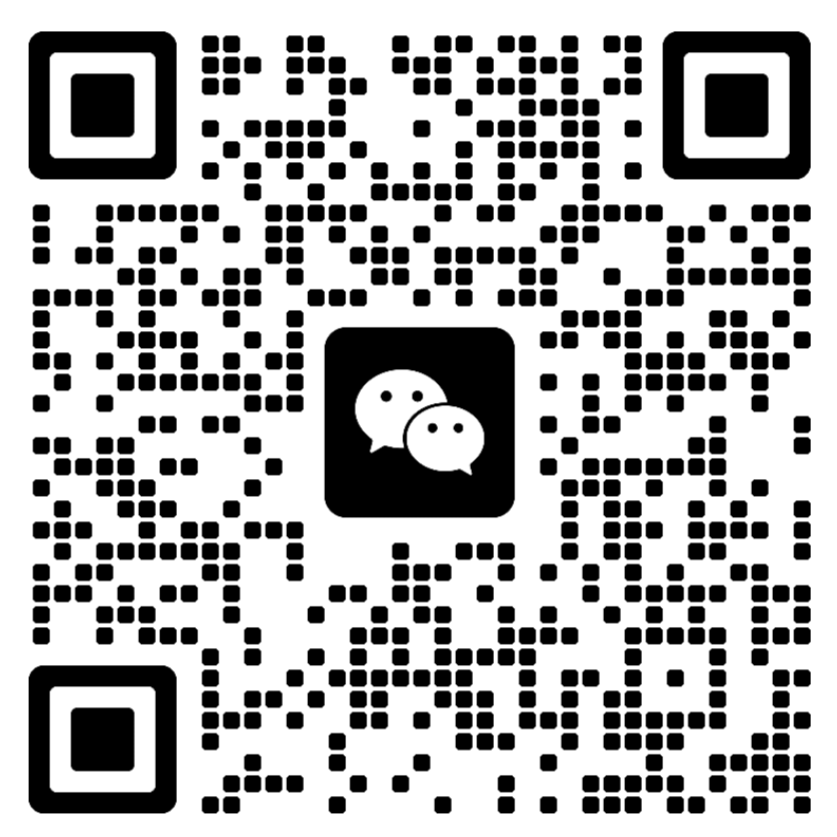Microsoft Interview Tips: Real Questions Answers & OA Interviews
Microsoft Interview Prep: Questions & OA Walkthrough
Microsoft's Software Engineer hiring process typically begins with a careful resume screening that focuses on relevant experience and specific technical skills. Candidates may then be required to complete one or two rounds of online testing (OA), which evaluates coding and problem-solving skills and is a critical step in subsequent phases. In some cases, the resume and OA are followed by an initial screening call with the recruiter to learn about the candidate's background, interests, and fit with Microsoft's core values and technical direction.
After a successful online test, applicants typically move on to one or two rounds of phone interviews. These interviews are designed to assess the candidate's technical skills, often through programming exercises and algorithmic questions, and will review the applicant's previous projects and experience. The phone interviews not only look at coding skills, but also assess problem-solving ideas and communication effectiveness, and are an opportunity to demonstrate how challenges are addressed and solutions are conceptualized.
After a successful phone interview, candidates move on to Onsite Rounds, which typically consists of four to five rounds of interviews, each lasting approximately 45 minutes to an hour, with the interviews closely spaced. Onsite interviews are a combination of coding, system design, and behavioral questions designed to fully assess the candidate's technical proficiency and cultural fit in a dynamic Microsoft work environment. During the interview, candidates may be required to solve problems on a whiteboard to demonstrate the ability to think and code under pressure.
SDE
Responsibilities:Responsible for designing, developing, testing and maintaining software products and systems. Covering a wide range of areas, from operating systems, office software to cloud computing, artificial intelligence, etc.
Interviews look at technical points: Data Structures and Algorithms, System Design, Programming Skills, Computer Fundamentals, Domain Specific Technologies (Frontend, Backend, Cloud, ML, etc. depending on the team).
data scientist
Responsibilities:Extract valuable insights from massive amounts of data using statistics, machine learning and data analytics techniques and build data-driven products and solutions.
Interviews examine technical points: statistics and probability, machine learning theory and applications, data processing and analysis, SQL, experimental design, programming skills (Python/R), business understanding and modeling.
cloud engineer
Responsibilities:Design, deployment, management and optimization of cloud computing platforms (specifically Microsoft Azure). Deep understanding of cloud services, infrastructure, automation and DevOps practices is required.
Interviews examine technical points: Microsoft Azure services, cloud computing fundamentals, automation and scripting, DevOps practices (CI/CD, Monitoring), cloud security, troubleshooting and performance optimization.
research scientist
Responsibilities: Research and innovation in cutting-edge technologies at Microsoft Research and other departments.
Interviews examine technical points: in-depth technical domain expertise, research skills and innovativeness, academic background and achievements, ability to solve open-ended problems, programming skills (usually more demanding).
SDE Interview Key Areas
When preparing for a Microsoft software engineering interview, it is vital to familiarize yourself with the various programming question types. Among them, basic Data Structures and Algorithms (DSA), Backtracking and Two Pointers are the most common question types. However, Microsoft programming interviews seem to have a higher propensity for Backtracking questions compared to other companies. Also worth noting are smaller categories like Graphs and Simulation that are relatively less common, but can play a key role in determining the success of an interview. This diversity requires a more comprehensive preparation strategy that goes beyond focusing on the typical high-frequency points.
| Features | Percentage |
|---|---|
| Misc | 14.7% |
| Simulation | 2.9% |
| Two Pointers | 10.3% |
| Adv. Data Structure | 10.3% |
| Backtracking | 11.8% |
| Basic Data Structure and Algorithm | 11.8% |
| Binary Search | 5.9% |
| Heap | 7.4% |
| Graph | 2.9% |
| Dynamic Programing | 4.4% |
| Depth-First Search | 10.3% |
| Breadth-First Search | 7.4% |
Programming interview questions at Microsoft are usually difficult but still manageable. Candidates will often encounter questions involving backtracking, dynamic programming, and double pointers. While these questions are challenging, they are generally not as difficult as Google or Apple interview questions, making the difficulty level slightly more palatable for candidates.
If you look at the percentage of difficulty of the questions, only 15.61 TP6T were easy questions, the percentage of medium difficulty questions was as high as 63.31 TP6T, and the remaining 21.11 TP6T were high difficulty interview questions.
Questions and Difficulty
| Common Interview Questions | Examining technical points | degree of difficulty or ease |
|---|---|---|
| Longest Happy String | Pile, miscellaneous | medium difficulty |
| Minimum deletion amount to make a character frequency unique | Basic Data Structures and Algorithms, Miscellaneous | medium difficulty |
| Integer to English words | backtracking algorithm | challenging |
| Symbols for the product of arrays | Basic Data Structures and Algorithms | liable (to) |
| LRU cache | Basic Data Structures and Algorithms | medium difficulty |
| Maximum length of concatenated strings with unique characters | backtracking algorithm | medium difficulty |
| Number of islands | Advanced data structures, breadth-first search, depth-first search | medium difficulty |
| Find N unique integers that sum to zero | Basic Data Structures and Algorithms | liable (to) |
| Compute the good node in a binary tree | Breadth-first search, depth-first search | medium difficulty |
| Reversing words in a string II | dual-pointer | medium difficulty |
Microsoft OA (online assessment)
Microsoft's Online Assessment (OA) is a part of its hiring process used for initial screening of candidates. The main purpose is to quickly assess a candidate's technical skills, especially programming fundamentals, data structures, algorithm applications, and problem-solving abilities, before a formal interview. This helps Microsoft to efficiently identify potential technical talents from a large number of applicants.
Junior Software Engineer
Highlights of the technical mission.
- Solid foundation in data structures and algorithms.
- Proficiency in at least one programming language (C++, Java, C#, Python, etc.).
- Ability to solve moderately difficult algorithmic problems.
- Understand basic object-oriented programming concepts.
- Ability to communicate clear ideas.
Common Interview Questions.
- Given an array of integers and a target value, find the two numbers in the array whose sum is the target value. You can assume that each input corresponds to only one answer and that the same elements cannot be reused.
- Reverse a single linked table.
- Implementing a Queue allows only two Stacks to be used.
- Hierarchical order traversal of binary trees (breadth-first search BFS).
- Checks if a string is a valid sequence of parentheses (e.g. "()[]{}" is valid, "([)]" is not).
Senior Software Engineer
Highlights of the technical mission.
- Proficient in common data structures and algorithms and able to solve more complex algorithmic problems.
- A good foundation in systems design and the ability to design a medium-sized system or a component of an existing system.
- In-depth understanding of object-oriented design and common design patterns.
- Familiarity with concurrent programming or multithreading (depending on the specific position).
- Be able to weigh different technical solutions and explain their advantages and disadvantages.
- Demonstrate leadership and mentoring potential in technical discussions.
Common Interview Questions.
- Merge K sorted linked lists.
- Find the Lowest Common Ancestor (LCA) of two nodes in a binary tree.
- Design a Rate Limiter.
- Searches for a target value in a rotationally sorted array.
- Design of a URL shortening service (focusing on core functionality and data model design).
Chief Software Engineer
Highlights of the technical mission.
- Deep expertise in one or more technical areas.
- Ability to design complex, large-scale distributed systems.
- In-depth understanding of concepts such as system architecture, scalability, availability, consistency, and fault tolerance.
- Ability to deal with ambiguity, break it down and propose multiple viable technical solutions.
- Exceptional technical leadership with the ability to influence teams and even organizations on technical body decisions.
- Strong insights into technology trends.
Common Interview Questions.
- Designing a Twitter-like dynamic messaging (News Feed) system requires consideration of write amplification, read amplification, caching, storage, and so on.
- How to design a highly available distributed Key-Value Store? Discuss data distribution, replication, consistency models, and more.
- Design a Distributed Queue.
- Discuss what was the biggest challenge you encountered in designing a large system? How did you analyze the problem and solve it? (Open-ended questions incorporating personal experience)
- How would you consider the trade-off between data consistency and latency if you needed to design a cross-regional (Geo-Distributed) online service?
Behavior Questions
Behavioral interview process is frankly the interviewer wants to see how you are this person, teamwork is good, how to solve problems. When preparing for the interview, you can think about the projects that made you feel most accomplished in the past, the technical problems you encountered, how you handled a disagreement with a colleague, and how you learned from your mistakes. When answering, you can use the STAR method, that is, first saySituationAnd then say yourTask What is it? Go on, tell me exactly what it is.Action takenAnd finally.Result What it is. This tells the story in a well-organized way.
Interview Prep
Microsoft especially looks at the fundamentals. You need to be able to play with arrays, chained lists, trees, graphs, hash tables, and so on, and know what's going on with the various sorting and searching algorithms, and whether the complexity is O(n) or O(n log n), and you need to be clear about it. The best way is to go to a website like LeetCode (力扣), practice more, brush by type, and look at Microsoft's frequently asked questions. When writing code, don't just write, but talk about your thoughts while writing, so that the interviewer knows what you are thinking. Choose the language you know best and practice it, Python, Java, C++.
A week before the interview remember to go over your project again, can speak clearly; understand what products and technologies Microsoft has, do not ask a question, do not know; do not forget to ask the interviewer a few good questions at the end of the interview, show your interest; conditions allow, it is best to find peoplemock interviewA few times, to practice the feeling.
System Design Sample Problem Solving
Title: Identify and filter fraudulent transactions in real-time for Microsoft's Azure billing system.
Non-functional needs:
- Hundreds of thousands of queries processed per second during peak periods
- High availability, no downtime even with regional failures
- Fault tolerance, the system should be able to gracefully handle the failure of a single component or data center
- Low latency, fraud detection should be accomplished in near real time within a few tens of milliseconds
- Accuracy, minimizing false alarms and missed alarms
- Cost-effective and efficient utilization of cloud resources
This is to examine the candidate's grasp of the overall architecture of the real-time fraud detection system, especially in the very high concurrency, high availability, low latency and accuracy of these points, the candidate immediately with the interviewer to confirm some details, such as the specific definition of "fraud", need to pay attention to what types of anomalous behavior (eg: Unusually large purchases, multiple transactions across geographies in a short period of time, unusual resource creation behavior, etc.). Then I followed the interviewer's lead and indicated the direction of the discussion, whether I wanted to talk about the detailed design of the API and data model first, or build the high-level architecture first, and the discussion points were roughly:
System Design Discussion.
Do you want me to discuss the data models for transactions and user profiles, and the API for submitting transactions? (您是想我详细讨论交易和用户資料的数据模型以及交易提交的 API for submitting transactions?)
Or do you want me to discuss the high-level infrastructure components for real-time fraud detection first?
The interviewer said to start with the high-level components first, requiring candidates to work around the points of data inflow (Event Hub/Kafka), real-time processing engine (Stream Analytics/Flink/Spark Streaming), rules engine (CEP, Complex Event Processing), machine learning modeling services ( Azure Machine Learning/TensorFlow Serving), feature storage (Redis/Cosmos DB), and alerting and disposition (Function Apps/Logic Apps), while emphasizing how to ensure high availability and fault tolerance through multi-live architecture, data partitioning, asynchronous processing, and elastic scaling. availability and fault tolerance, and utilizing caching and in-memory computing to reduce latency. In terms of ensuring accuracy, it also mentioned how to combine historical data training models, real-time feature engineering, and manual review mechanisms. This part of the conversation feels okay, mainly to show the breadth and depth of your thinking, as well as the ability to trade-off under different needs.
The system design chat lasted about 20 minutes or so, then it was time for the algorithms session. The interviewer gave this question:
Coding Problem.
Given a stream of transaction data, design and implement a component that detects an abnormal spike in transaction counts for a specific user during a rolling time window. Specifically, if a user's transaction count in the past minute is the average of its transaction count in the past hour N times or more, it is marked as abnormal.
This question is not particularly difficult, but there are a lot of details, the first reaction to the question is to ask about the structure of the input data (such as user ID, timestamp, amount, etc.), as well as the specific definition and parameters of the "abnormal peaks". N value range, and the granularity of the time window (minutes, hours), the interviewer said to start with the assumption that the transaction data is streamed in JSON format containing the userId, timestamp, amount fields, theN It can be any positive floating point number and the time window is accurate to the second.
Problem Solving Ideas:
First, we need to maintain two sliding windows for each user: one for transaction counts in a one-minute window, and another for transaction counts in an hourly window. This can be done using thehash table(or a similar structure) is implemented, where the key is a userId and the value is a queue or list containing a timestamp.
Specifics on realization:
- Data structure selection:
- For each user, we can use adouble-ended queue(collections.deque works well in Python) to store every transaction in the past minute and the past hour in thetimestampThe
- Or, more efficiently, we could maintain two counters for each user: last_minute_count and last_hour_count, and combine them with a timestamped queue to dynamically adjust both counts. When a new transaction comes in, update the counter; when an old transaction expires, decrease the counter.
- Sliding window logic:
- When a new transaction is received, its timestamp is recorded.
- Iterate through both queues (or timestamps) for each user, removing all timestampsOut of the current window(e.g., more than a minute or an hour) of transactions. The corresponding count is updated at the same time.
- Add the timestamp of the new transaction to the queue and update both counts.
- anomaly detection:
- After each update of the count, the current user is counted in theWithin a one-minute windowNumber of transactions (C1min) andWithin one hour windowThe average number of transactions (Avg1hr=C1hr/60).
- in the event that C1min>N×Avg1hr, then the user is marked as an exception. Needs to be handled Avg1hr is zero to avoid dividing by zero errors, in which case you can set a minimum threshold, for example when C1min Exceeding a certain absolute value is also considered an exception.
- make superior:
- Considering that the number of users can be very large, directly storing a timestamped queue of all transactions for all users would take up a lot of memory. We can consider using a fixed-sizeSliding Window Arrayor better.Time series database(e.g., InfluxDB) to store and query data, but for interviews, an in-memory hash table plus a queue is a more straightforward solution.
- If you are only concerned with counts and not specific transactions, you can use a more lightweight counter, such as updating the counts at fixed intervals instead of every transaction.
- For real-time stream processing, you can use thewindow function(e.g. in Flink or Spark Streaming) to automatically manage sliding windows and counts.
When writing code on the spot, candidates need to try to make variable and function names as clear and understandable as possible, and explain the logic to the interviewer while writing, emphasizing theTreatment of boundary conditions(e.g., user's first transaction, insufficient number of transactions in the window to compute an average, etc.) It should be specifically mentioned that for efficiency reasons, we should not traverse the entire queue each time, but rather take advantage of the nature of double-ended queues to remove only the elements at the head of the queue that have expired when the window slides.


